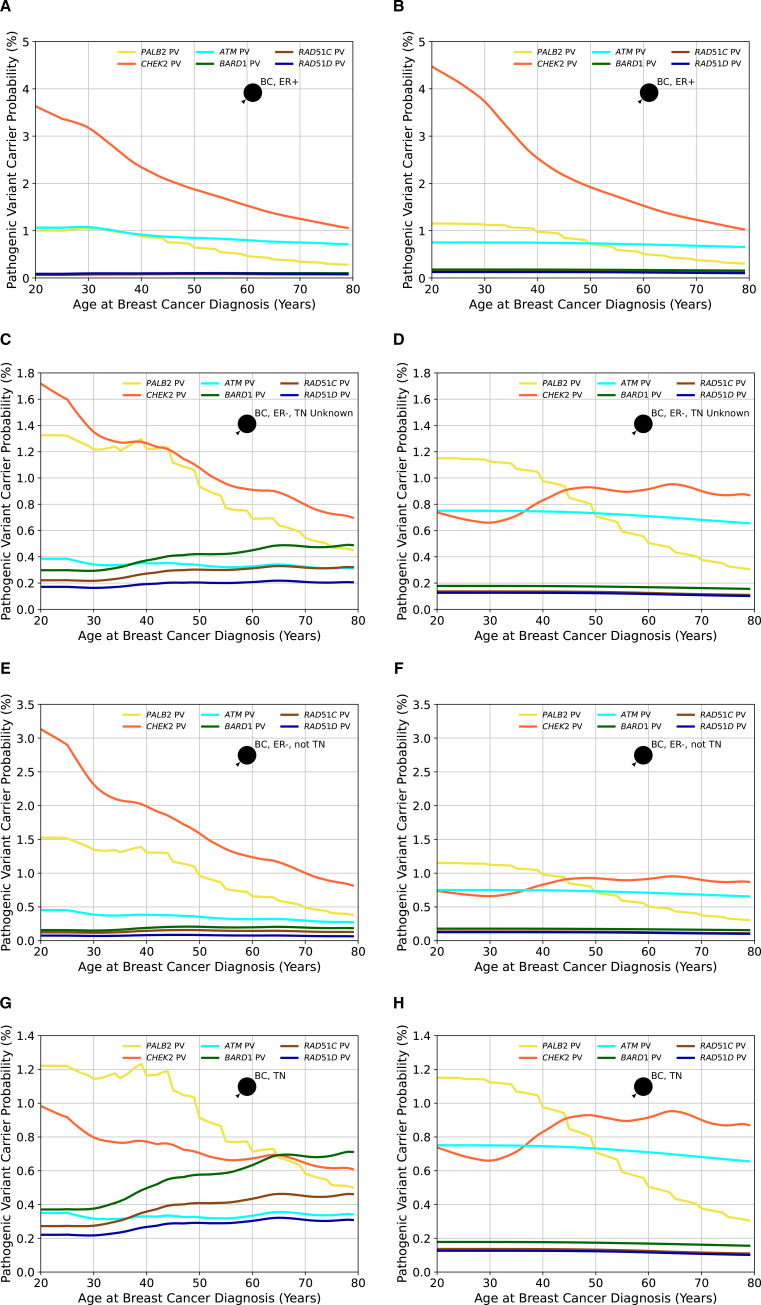Figure 4.
The probabilities of carrying a pathogenic variant estimated by BOADICEA (Breast and Ovarian Analysis of Disease Incidence and Carrier Estimation Algorithm) model in the genes PALB2, CHEK2, ATM, BARD1, RAD51C and RAD51D for an affected female born in 1985 as a function of her age at diagnosis based on different tumour pathology. Figures (A), (C), (E) and (G) show the probabilities based on the updated proportions (current model), while figures (B), (D), (F) and (H) are based on the previously assumed tumour pathology proportions (previous model version) and where proportions for BARD1, RAD51C and RAD51D, which were not in the previous model, are assumed to be the same as in the general population. In figures (A) and (B), the woman has had an oestrogen receptor-positive (ER+) tumour; in figures (C) and (D), the female has had an oestrogen receptor-negative (ER−) tumour, but the triple-negative (TN) status is unknown; in figures (E) and (F), the woman has had an ER− tumour that is not TN and in figures (G) and (H), the woman has had a TN tumour. Predictions are based on UK cancer incidences. BC, breast cancer.

